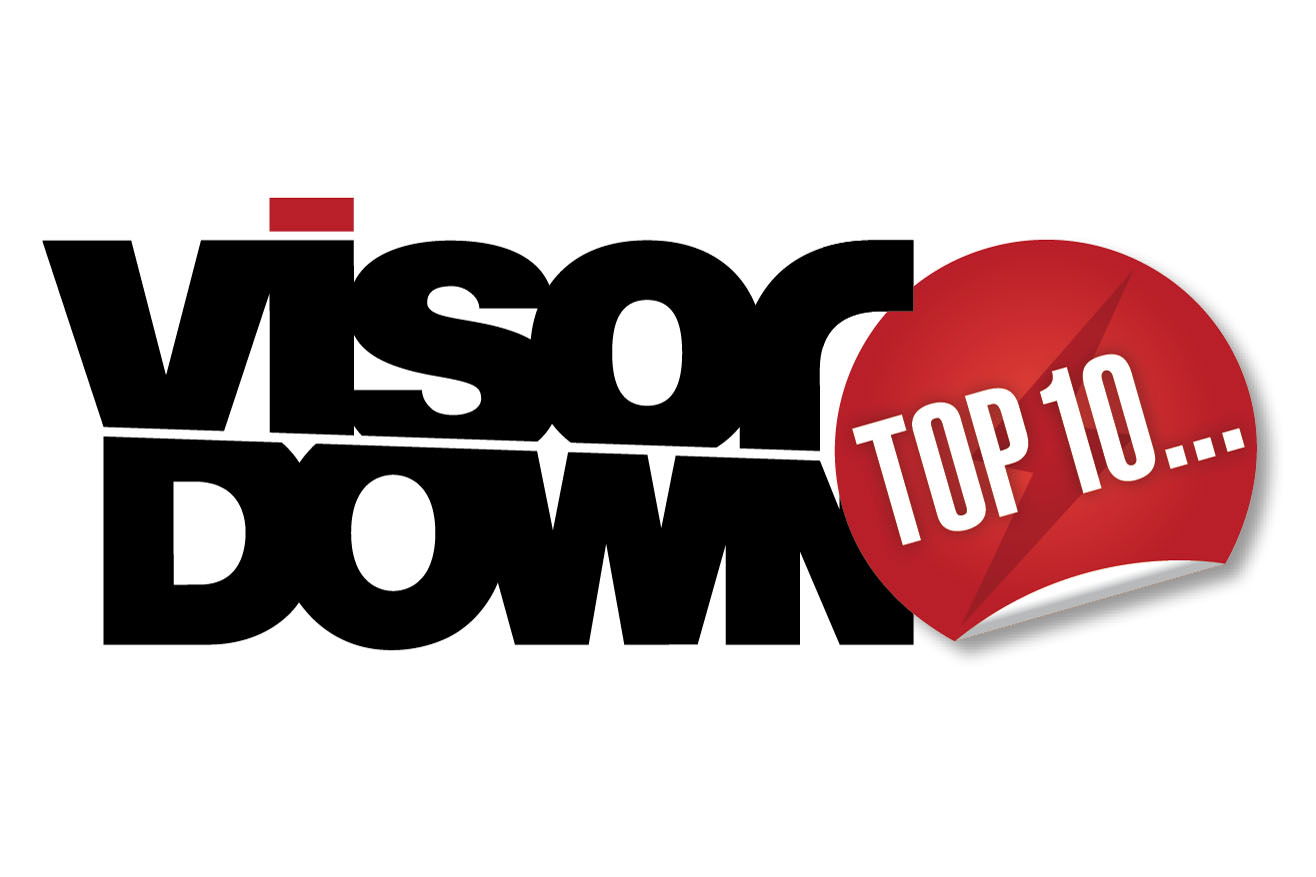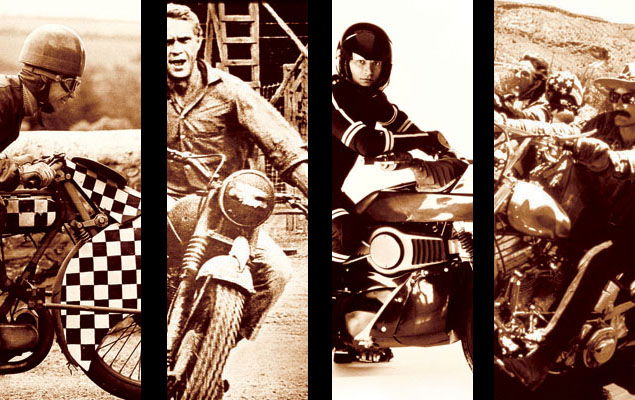Top 10 sexiest motorcycles of all time
Definitive? We're not sure. Debatable? For sure! It's not about price, it's not about performance. It's about the feeling they give you.


10. MV Agusta F4CC
If power is the ultimate aphrodisiac, then MV Agusta’s F4CC is the planet’s most sexually charged motorcycle. Not simply because of its sheer horsepower; a claimed 200bhp with the titanium race exhaust in place. Nor because only 100 units will be built, at €100,000 apiece. (The only one in this country costs £75,350 on the road — and you did read that correctly.)
No, the CC’s real power is in its name. The CC stands for Claudio Castiglioni, MV’s President. They could just as easily be for Capo dei Capi, the Mafia term for boss of bosses. “I put my name to this motorcycle because I originally dreamed of it for myself,” says Castiglioni. It is created to be the ultimate F4; an unashamedly self-indulgent, money-no-object version of the radial 16-valve four on which the famous Italian (alright, Italian-American) marque was reborn.
As befits the Capo’s Creation, the CC is faster even than the F4 Ago; more intricately detailed even than the F4 Tamburini. Its 1078cc engine is tuned with titanium internals and variable intakes, and lightened with magnesium covers. The chassis combines magnesium frame sections and swing-arm with carbon bodywork plus unique, hand-machined components. Another famous saying is that absolute power corrupts absolutely. Clearly that is sometimes a very good thing.
Click here to read our MV Agusta F4 1000R review.
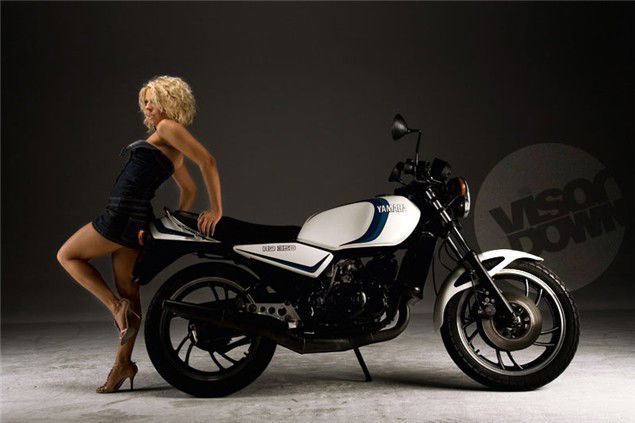
9. Yamaha RD350LC
If bikes such as the Desmosedici and RC30 are motorcycling’s supermodels, then the RD350LC is the saucy sixth-former that all the boys fancied at school — and it’s no less appealing for that. In the early Eighties there was nothing on wheels that matched the Elsie’s blend of clean good looks, razor-sharp performance, racetrack cred and down-to-earth price. This was the blonde bombshell that teenaged leather-jackets could take home to meet the folks — and which was a total blast to ride.
Despite its humble status the LC had class in its genes. The liquid-cooled two-stroke twin was descended not only from Yamaha’s line of superb aircooled roadsters such as the RD350 and RD400, but also from the all-conquering liquid-cooled TZ350 and 250 racers. Adding the water jacket to the RD’s cylinders allowed Yamaha to boost output to 47bhp, good for 110mph with a thrilling kick as the power came in with an orgasmic six-grand shriek.
The simple but attractive styling matched the shapely tank, seat and sidepanels with eye-catching curved spokes, plus black engine and pipes. Competent forks, a cantilever monoshock rear end and sharp twin-disc front brake combined with light weight to make the Yam ace in the bends. It was the ultimate poor boy’s superbike; the star of a million teenage fantasies.
Click here to read Yamaha RD350LC owner reviews.
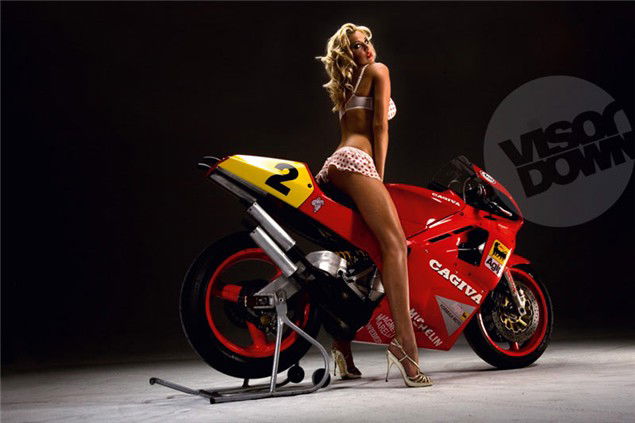
8. Cagiva V589
One of the most vivid images from 500cc grand prix racing in the late Eighties was of Randy Mamola power-sliding his factory Cagiva sideways out of a bend with smoke pouring off its rear slick. Randy managed only one podium finish aboard the Cagiva, and couldn’t approach the four championship runner-up spots he’d managed for Suzuki, Honda and Yamaha. But the tiny Italian factory’s efforts to beat the Japanese giants in racing’s toughest class were truly heroic.
Cagiva’s creation might not have been the fastest of the 500cc brat-pack, but it was surely the most deliciously sleek and streamlined. There was plenty of high tech beneath its all-enveloping bodywork, too. The 498cc liquid-cooled V4 used contra-rotating twin crankshafts, and produced about 150bhp. The twin-spar aluminium frame and banana swinger were Cagiva’s own; suspension was Marzocchi and Öhlins’ finest.
Cagiva’s growing GP challenge saw race wins for Eddie Lawson and John Kocinski in the Nineties. Kocinski even led the ’94 championship before cash problems forced Claudio Castiglioni to abandon his dream. More recent rumours that Cagiva would produce a limited-edition replica for track-day or collector use have faded. But the red bike that Randy rode remains a stunning memento of one of racing’s most inspiring struggles.
Realted article: Cagiva V589 obsession
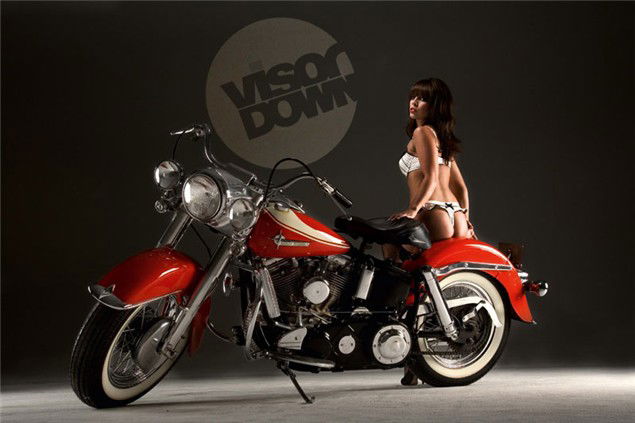
7. 1961 Harley-Davidson Duo Glide
It’s no wonder that Harley has forged such a successful business by faithfully copying the look of its greatest hits from the Fifties and beyond. One glance at this immaculately preserved Duo-Glide confirms the pulse-quickening, gut-churning appeal of a big, aircooled 45-degree V-twin engine, housed in a long, laid-back cruising machine with cow-horn bars, swoopy fenders, buddy seat, lashings of chrome and a gas tank shape just so.
Especially when it’s all wrapped up with a technical advance that made the FLH Duo-Glide, released in 1958, one of Milwaukee’s most significant machines. Eight years earlier, the Model EL had introduced Hydra-Glide telescopic suspension to Harley’s range. Now the 74ci (1208cc) V-twin gained hydraulically damped rear shocks, adding considerably to the comfort of a bike whose 52bhp output gave genuine ton-up performance.
“Now! The Greatest Motorcycle ever built,” trumpeted Harley’s advertising back in 1958. “New swinging-arm suspension combines with Hydra-Glide front fork and spring-loaded seat post to make the Duo-Glide a miracle ride.” A trifle immodest, perhaps. But half a century later, the fact that the Duo-Glide’s visually near-identical descendents are some of the most desirable bikes on the planet suggests that — in terms of lasting sex appeal, at least — it really was The Greatest.
Related article: Harley-Davidson Duo Glide - The one that got away

6. Suzuki GSX-R750G
Life in the fast lane was transformed when the GSX-R750 exploded onto the scene in 1985. Tall, slim and with those two round headlights set in a shapely full fairing just like Suzuki’s works endurance racers, the outrageously light and fit GSX-R made every rival seem like a fat bird with acne. Suzuki’s engineers had simply redefined what was possible from a mass-produced motorcycle.
The GSX-R’s revolutionary aluminium frame weighed less than half as much as the steel equivalent of its GSX750 predecessor. Foam-backed instruments, slender 18-inch wheels, and the oilcooled motor’s magnesium cam-cover contributed to an all-up weight of 176kg, over 30kg down on Yamaha’s new FZ750. But Suzuki’s superstar didn’t crush the opposition just by dieting; it was powerful as hell too. The 16-valve four made 100bhp, coming alive at 7000rpm to send the bike tonking to over 145mph.
Straight out of the crate, the GSX-R was in a different league to most rival streetbikes, and ridiculously competitive on track. Hotted-up with flat-slide carbs and a loud four-into-one, it was faster, louder and sexier still. The Gixxer cult was born; high-performance motorcycle design entered a new era. More than two decades later, the reputation of the bike that started it all is stronger than ever.
Related article: Niall's Spin - 1985-1986 Suzuki GSX-R750
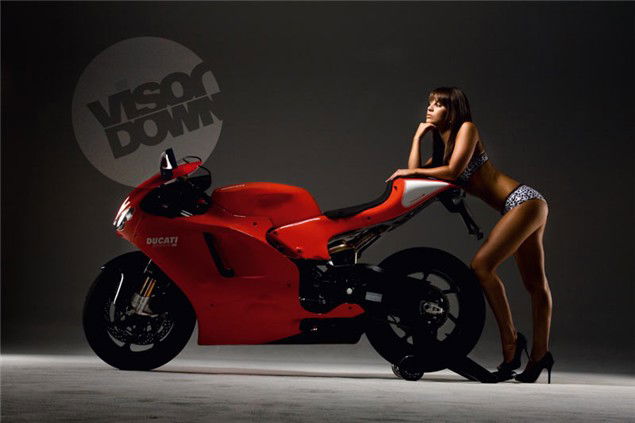
5. 2008 Ducati Desmosedici RR
If any modern superbike demands that all performance-hungry motorcyclists should stand up and salute as it roars by, it’s Ducati’s extraordinary V4 missile the Desmosedici RR. Not that you’re ever likely to see one of these stunningly exotic MotoGP replicas in the local high street any time soon, even if the Bologna firm has increased the hand-built production run to over 1000, to meet undreampt-of demand for a bike costing more than £40,000.
Such a price might normally seem ludicrous even for the finest of production bikes, but not for the Desmo Sixteen. Ducati’s audaciously conceived and brilliantly realised 989cc, 16-valve V4 is improbably similar to the mighty works Desmosedici on which Troy Bayliss won the final race of MotoGP’s 990cc era two years ago; and which was regularly the fastest of all the factory weapons in a straight line.
Perhaps the statistic that best sums-up the Desmosedici RR is not its 200bhp power output with included loud Termis fitted, its near-200mph top speed or its long list of race-quality components, but the fact that its painstakingly designed and constructed chrome-moly tubular steel frame is both lighter and 80 per cent more torsionally stiff than the 1098’s equivalent. Compared to Ducati’s majestic MotoGP-replica tool, everything else on two wheels is, frankly, just a bit soft.
Click here to read Ducati Desmosedici owner reviews.
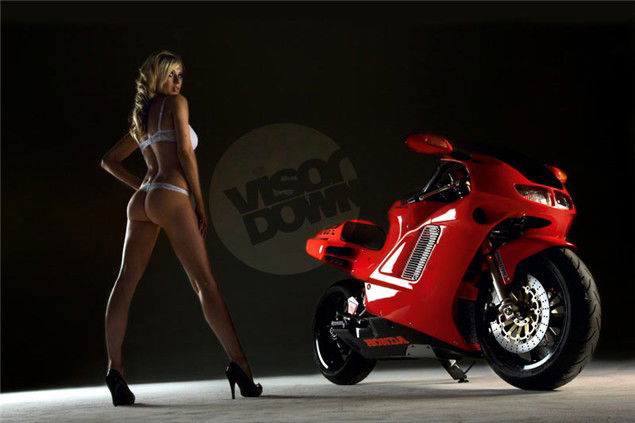
4. 1992 Honda NR750
The sexiest new bike of 1992 was not the phenomenal FireBlade, but Honda’s much less accomplished yet still achingly gorgeous NR750. The oval-pistoned V4’s drop-dead looks, long list of technical innovations and unapproached air of quality and exclusivity made even the brilliant Blade seem almost Ugly Betty.
Never mind that the NR500 four-stroke racebike that inspired the roadster had embarrassingly uncompetitive against the V4 two-strokes following its debut in 1979. Or that any theoretical advantage of oval pistons was irrelevant on a streetbike. More than a decade after abandoning the racer — whose unique twin-conrod piston arrangement had been designed to mimic a V8 — Honda launched the 32-valve, fuel-injected, staggeringly complex NR whose 125bhp max output made it the world’s most powerful production 750.
Unfortunately the NR weighed a hefty 222kg, and felt bland due to its seamless power delivery. But boy, was it stylish, with a snarly twin-headlamp fairing, and curvaceous, carbon-fibre reinforced tailpiece finished in the same lustrous red paint. Below the titanium-coated screen was a “floating” LCD speedo. Polished aluminium frame, single-sided swinger and sophisticated usd forks added to a spec almost as jaw-dropping as the £35,000 price tag.
Related article: Related article: Bloodlust - Honda NR750 vs. Ducati Desmosedici
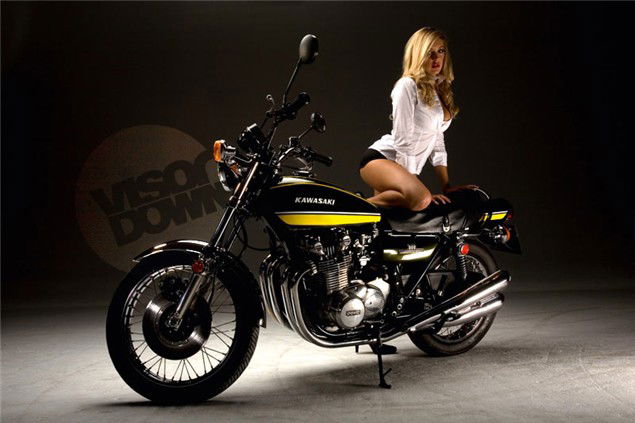
3. Kawasaki Z900A1 1973
The mighty 903cc four with which Kawasaki redefined high-performance motorcycling in 1973 was not just the most awesomely fast and powerful superbike ever built. It was also a breathtakingly handsome machine whose high bars, teardrop tank, slinky sidepanels and colour-matched ducktail perfectly complemented its muscular, aircooled powerplant. Not that most riders of rival bikes got more than a glimpse of its upswept four-pipe exhaust system as the Z1 charged into the distance.
Good looks are all very well, but it was brutal power that earned the King its nickname. The dohc engine’s maximum output of 82bhp at 8500rpm outclassed Honda’s single-cam CB750 unit by fully 15bhp. The Z1 accelerated towards its 130mph-plus top speed with enough acceleration to rip the sleeves off its rider’s cheese-cloth shirt. In addition the engine’s tuning potential was huge, and its bottom-end strength turned the adjective “bulletproof” into a Seventies cliché.
Handling was a different story. The Zed’s blend of horsepower, high bars, marginal frame stiffness, basic twin-shock suspension and almost 250kg of fuelled-up weight made high-speed travel distinctly lively at times. Ridden hard, nothing on earth got the blood flowing like the big Zed. That merely adds to a legend which, 35 years later, shows absolutely no sign of dimming.
Related article: Meet the family - Kawasaki Z900

2. 1988 Honda RC30
There had been plenty of exotic two-wheeled pornography before Honda unleashed the VFR750R in 1988. But there had never been anything as hardcore this. The machine code-named RC30 was close to being Honda’s all-conquering RVF750 factory racebike with lights; a stunningly faithful recreation of the V4 missile that ruled top level four-stroke racing.
Its sleek RVF shape, unmatched specification and racing heritage made the RC30 highly desirable, but it was the Honda’s all-devouring performance that made it irresistible. Its 112bhp output, combined with compact size and slippery bodywork, sent the bike surging to 155mph with a deceptively effortless feel and a deliciously deep 360-degree V4 exhaust drone that raised the hairs on your neck. The rigid frame and Pro-Arm, racy RVF geometry and peerless suspension gave handling so precise it was as though you were gripping the front wheel spindle.
Winning is sexy, of course, and the RC30 did plenty of that. Foggy and Flyin’ Fred Merkel rode race-kitted RC30s to back to back titles in the world F1 and Superbike championships in 1988 and ’89. Unfortunately for less well-backed racers, in some classes the costly V4 was so dominant that there was no point in turning up without one. Two decades on, it remains highly valuable — and the ultimate example of Honda’s engineering class.
Click here to read Honda RC30 owner reviews.
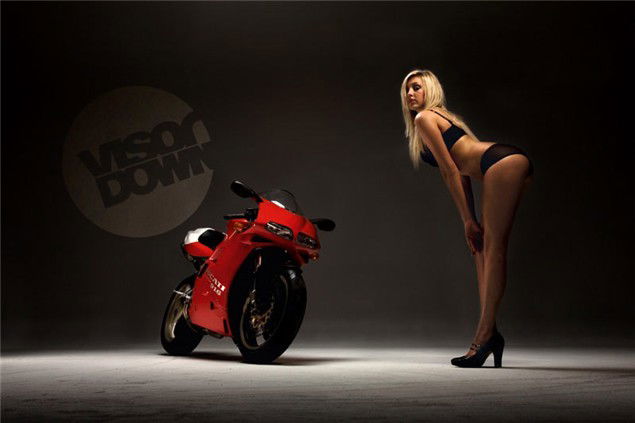
1. 1996 Ducati 916SPS
In the mid-Nineties, with Foggy conquering all on the World Superbike racetracks, there was only one bike more beautiful and desirable than the Ducati 916 — and that was the hotted-up SPS version of the Bologna brand’s V-twin masterpiece. Visually almost identical to the standard 916 that had been launched in 1994, the SPS — standing for Sport Production Special, latest in a line of homologation exotica dating back to the 888 — arrived two years later with even more speed, thunder and sex appeal.
This ’96-model SPS retained the eight-valve desmo unit’s standard 916cc capacity but produced an extra 20bhp, to 134bhp, thanks to mods including raised compression and Termignoni carbon cans, plus titanium conrods to help keep it together. Bigger Brembo discs and an Öhlins shock helped justify a price tag of over £20,000, almost twice that of the standard model. The following year’s SPS added a bigger, 996cc engine and extra carbon-fibre bits to the already mouthwatering package.
The Ducati’s outrageous performance came with typical problems. This immaculate SPS, owned from new by Cambridgeshire farmer Jamie Rule, broke a cam-belt and also had its rectifier catch fire. Luckily Jamie needed a piss anyway, so stopped, unclipped a fairing panel and doused the flames just in time. Red and so hot you can’t keep your strides on; that’s the 916SPS.
Read Ducati 916SPS review.
Read Superbike classics - Ducati 916SP v Honda RC45
Article originally published on March 16, 2010. Pics courtesy of Bennetts.
